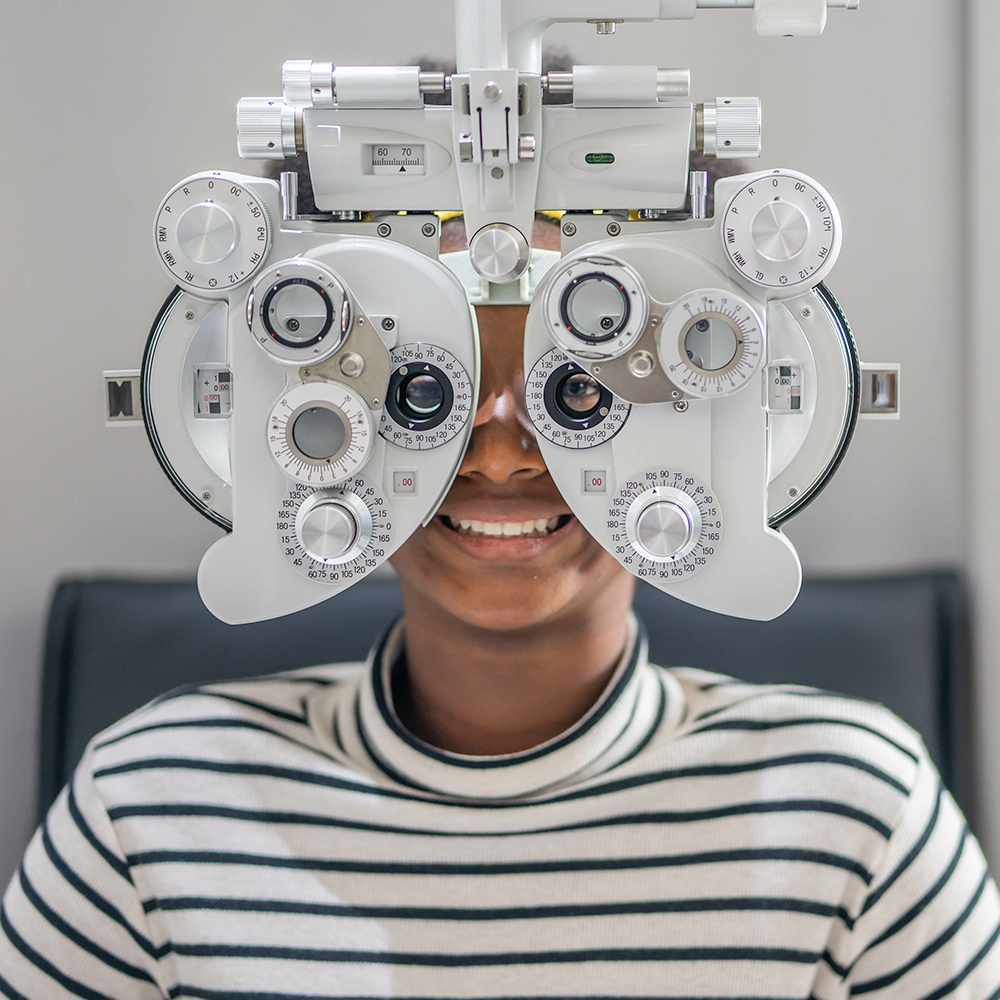The Value of Regular Exams with an Eye Doctor Optometrist
The Value of Regular Exams with an Eye Doctor Optometrist
Blog Article
Understanding the Comprehensive Function of an Eye Doctor in Modern Eye Treatment
With developments in technology and a raising focus on preventative treatment, optometrists are integral in detecting and managing chronic eye problems, while additionally engaging in early disease discovery. Just how do these duties converge with their role in advertising general eye wellness, and what does this mean for client outcomes in a collective healthcare environment?
Expanded Scope of Technique
In the last few years, the role of eye doctors has actually advanced dramatically, with several experts currently accepting a broadened range of practice that extends past typical eye examinations. This advancement shows the growing acknowledgment of optometrists as key doctor in the field of eye care. Their obligations currently encompass a variety of solutions, consisting of recommending medicines for eye problems, taking care of chronic eye conditions, and performing small surgical procedures. This shift has actually been driven by innovations in optometric education, boosted scientific training, and the raising demand for thorough eye treatment services, particularly in underserved areas.
Better, optometrists are now more associated with joint treatment, working closely with ophthalmologists, medical care doctors, and other healthcare specialists to make sure all natural individual treatment. This interprofessional partnership is crucial in managing complicated instances that require a multidisciplinary technique. In addition, optometrists are playing a crucial function in public wellness initiatives, such as vision testings and eye health education, aimed at improving neighborhood health outcomes.
The broadened scope of practice for optometrists not only improves their ability to offer detailed treatment yet additionally deals with the expanding demand for available and effective eye treatment solutions, contributing to general medical care renovations.
Very Early Disease Detection
Very early discovery of eye conditions is significantly becoming a centerpiece in the increased duty of eye doctors. As primary eye care carriers, optometrists are distinctly positioned to determine early indicators of eye problems such as glaucoma, macular degeneration, diabetic person retinopathy, and cataracts. This crucial function is essential, as early medical diagnosis can significantly boost the management and prognosis of these problems, possibly preventing vision loss and improving client results.
Optometrists use comprehensive eye evaluations to identify refined changes in vision and eye health. These evaluations frequently consist of analyses of aesthetic skill, intraocular pressure, and retinal wellness. The capacity to recognize early signs of systemic health and wellness concerns, such as hypertension and diabetes, with ocular indications even more highlights the relevance of normal eye exams. Early treatment is not just beneficial in preserving vision however additionally in reducing health care expenses connected with advanced condition treatments.
In addition, optometrists play an important function in client education, highlighting the significance of routine eye exams as component of overall health upkeep. By fostering a positive technique to eye treatment, optometrists add substantially to public wellness, making sure illness are captured and handled effectively prior to they can advance.
Advanced Diagnostic Techniques
Advanced analysis methods have changed the technique of optometry, enabling experts to detect and keep track of ocular conditions with unmatched precision. Technologies such as optical comprehensibility tomography (OCT) give high-resolution, cross-sectional images of the retina, helping with very early detection of conditions like glaucoma and macular degeneration.
An additional important development is digital retinal imaging, which captures comprehensive views of the retina utilizing high-def electronic cameras. This technology is vital in identifying adjustments in retinal structure over time, thus helping in the administration of problems like diabetic retinopathy. Visual field testing, enhanced by computer-aided systems, permits exact mapping of an individual's field of view, crucial in diagnosing and tracking glaucoma development.
Corneal topography, one more notable diagnostic tool, produces topographic maps of the cornea's surface area. This is particularly beneficial in fitting call lenses and intending refractive surgical procedure. These innovative analysis techniques jointly enable optometrists to supply positive, targeted care, guaranteeing better person results and strengthening their pivotal role in eye health management.
Managing Persistent Eye Problems
Managing persistent eye problems is a cornerstone of optometric care that calls for a comprehensive understanding of various eye illness and their long-term ramifications. Optometrists play a crucial duty in tracking, handling, and diagnosing conditions such as glaucoma, diabetic person retinopathy, and age-related macular degeneration. These problems, if left neglected, can cause significant visual problems or blindness, highlighting the important relevance of continuous official source treatment and administration.
Eye doctors use an array of diagnostic tools, including optical coherence tomography (OCT), visual field screening, and fundus digital photography, to examine the progression of these chronic problems. By carefully checking changes in ocular health and wellness, eye doctors can readjust treatment plans to alleviate condition progression. This might include recommending drugs, recommending lifestyle adjustments, or coordinating with eye doctors for medical treatments when necessary.

Function in Preventive Care
Preventative care is a fundamental aspect of optometry that concentrates on keeping eye wellness and preventing the beginning of eye conditions. Eye doctors play an essential role in early discovery and prevention, employing routine eye evaluations to identify danger variables and refined changes in eye wellness. Opticore Optometry. These assessments are not simply regarding vision improvement but encompass a detailed analysis of eye functions and frameworks, enabling the identification of problems such as glaucoma, cataracts, and macular deterioration at an early phase
In enhancement to diagnostics, eye doctors enlighten patients on way of life options that promote eye health, such as appropriate nutrition, UV protection, and the significance of normal eye check-ups. They recommend on the proper use of electronic devices to stop electronic eye stress, an expanding problem in the digital age. Optometrists additionally provide advice on safety glasses for entertainment and work-related activities, mitigating the threat of injury.
Precautionary eye care includes systemic health and wellness issues that show up in the eyes, such as diabetes mellitus and high blood pressure. By collaborating with other healthcare experts, optometrists add to holistic client care, highlighting the interconnectedness of systemic and read this post here eye health and wellness. This proactive technique is vital in guarding aesthetic skill and overall health.
Final Thought
Optometrists currently inhabit a pivotal duty in modern-day eye care, identified by an increased scope that includes detecting and managing persistent eye conditions, prescribing medicines, and doing minor medical treatments (Eye Doctor). Their knowledge in early condition detection is boosted by sophisticated diagnostic strategies such as optical coherence tomography and digital retinal imaging. By emphasizing preventive care and individual education, eye doctors contribute significantly to general eye health and wellness, collaborating with other medical care experts to make sure efficient and comprehensive person outcomes

In enhancement to diagnostics, optometrists inform patients on lifestyle choices that promote eye wellness, such as appropriate nutrition, UV defense, and the relevance of regular eye exams.Precautionary eye care expands to systemic health problems that show up in the eyes, such as diabetes and high blood pressure.Optometrists now occupy a crucial function in modern eye treatment, characterized by a broadened range that consists of identifying and handling persistent eye problems, suggesting medicines, and performing small medical procedures.
Report this page